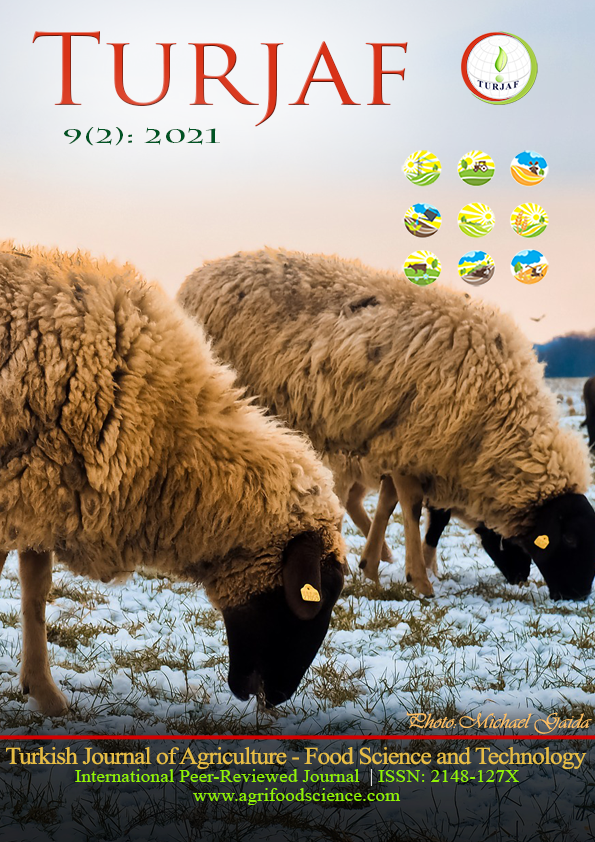Fertility of Uncontrolled Village Flock Eggs and Comparison of Quality Traits of Table-Eggs Produced in Different Production Systems
DOI:
https://doi.org/10.24925/turjaf.v9i2.356-361.4004Keywords:
Egg quality, production systems, free-range, organic, cage-systemAbstract
In this study, the eggs produced in uncontrolled village conditions were compared to free-range, organic and cage-system in two seasons, in autumn and spring, in terms of external and internal quality traits. In the autumn and spring period, 110 eggs were collected from the village eggs and 50 eggs from other production systems. In order to determine the fertility in the village eggs, 60 eggs were placed in a laboratory type incubator in both seasons and fertility control was made at the 18th day. All data of egg quality traits were performed by taking the average of the two seasons. Egg shape index, shell ratio, shell thickness, shell cleanness, shell defects, albumen and yolk traits differed significantly among production systems (P < 0.05). The lowest shape index, shell thickness and shell cleanness were found in village eggs. Higher shell rates were determined from eggs in cage and organic production compared to others (P < 0.05). The yolk height and yolk index were the lowest and the yolk colors were the darkest in the white cage eggs (P < 0.05). Brown cage eggs showed the better results in the majority of their quality traits. However, they had a higher meat and blood-spot level than other systems. In addition, the presence of cockerels in the village flocks caused the fertile eggs and approximately 85% fertility was obtained. Our results showed that it has become obvious that the village hen and free range hen eggs which can be marketed in high prices compared to the commercial eggs, have no superiority in terms of the traits they are considered. Besides, as they are significantly fertile, especially in hot summer months, according to storage duration and conditions, the probability of embryo development for these eggs has turned to be of high importance for consumption.Downloads
Published
How to Cite
Issue
Section
License
This work is licensed under a Creative Commons Attribution-NonCommercial 4.0 International License.


























